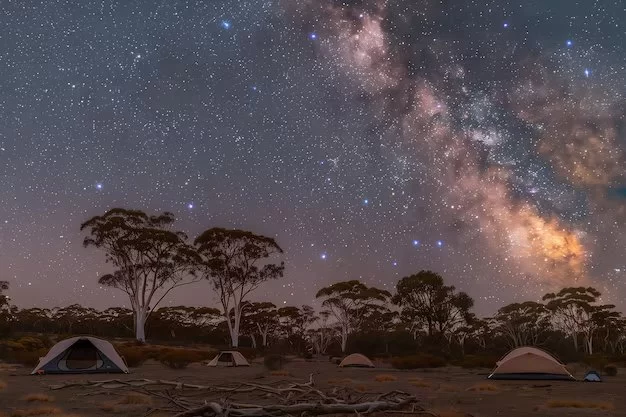- understanding-light-pollution-maps
- location-accessibility-vs-authentic-darkness
- weather-and-timing-matter-more-than-you-think
- terrain-visibility-and-natural-composition
- what-to-bring-for-night-sky-shooting
- real-experiences-from-night-sky-chasers
1. Understanding Light Pollution Maps
1.1 Why Light Pollution Is the Enemy
The first and most critical tip for finding the best campsite for night sky photography and time-lapse is simple: get away from city lights. Light pollution washes out star fields, reduces contrast, and renders your expensive equipment nearly useless. Tools like Light Pollution Map or Dark Site Finder can help you identify true dark sky areas.
1.2 Reading the Bortle Scale
The Bortle Scale is a rating from 1 (pristine dark sky) to 9 (urban sky glow). For meaningful astrophotography, aim for Bortle Class 1–3 zones. These areas aren’t just visually darker—they expose rich celestial textures invisible to the naked eye under city haze.
2. Location Accessibility vs. Authentic Darkness
2.1 How Far Should You Go?
Going remote isn’t always realistic. That’s why you need to balance darkness with accessibility. Some national parks like Capitol Reef (Utah) or Big Bend (Texas) offer both. If you’re based in the Midwest or East Coast, options might be farther afield—but not impossible. Some lesser-known parks promoted by Pine Cliff Resort even provide guided services to such dark zones.
2.2 Don’t Ignore Safety
The best campsite for night sky photography isn’t just about stargazing—it's also about safe terrain, flat surfaces for equipment, and low wind exposure. Scout ahead in daylight, and never camp in isolated valleys prone to flash flooding or sudden temperature shifts.
3. Weather and Timing Matter More Than You Think
3.1 The Sky May Be Clear on the Forecast—But Is It Stable?
Cloud cover is the obvious enemy, but atmospheric stability (called “seeing” and “transparency” in astronomical terms) can make or break your session. Use specialized weather services like Clear Outside to get hour-by-hour breakdowns of cloud percentage, humidity, and moon phase.
3.2 Seasonality and Lunar Cycles
The moon is beautiful, but it drowns out stars. For deep-sky photography or Milky Way timelapses, schedule your shoot around the new moon. Some of the best shots have been captured during the spring or fall, when air quality is higher and temperatures are milder for overnight stays.
4. Terrain Visibility and Natural Composition
4.1 Don’t Just Look Up—Look Around
The best night sky photos often include a compelling foreground. Desert rock formations, silhouettes of pines, or lakes that mirror the stars add magic. When scouting a campsite, think of your frame’s entire composition. Is there a solitary tree to use as a focal point? Can you see the horizon clearly?
4.2 Elevation Adds Drama
Higher elevation often means thinner air, which can result in crisper images and less light scatter. Many advanced photographers favor high deserts or alpine plateaus. Look for ridgelines or ledges with panoramic views for wide-angle timelapse captures.
5. What to Bring for Night Sky Shooting
5.1 Beyond the Camera
Obviously, you’ll need a DSLR or mirrorless camera with manual settings, a sturdy tripod, and a wide-angle lens (f/2.8 or faster). But don’t forget intervalometers, backup batteries, red-light headlamps (to preserve night vision), and dew heaters for your lenses.
5.2 Camp-Specific Gear for Comfort
Since night shoots can last hours, staying warm and comfortable is vital. Bring a well-insulated sleeping bag, windproof layers, and hot drinks. Sites like Pine Cliff Resort offer curated gear recommendations and packages designed for astro-camping specifically.
6. Real Experiences from Night Sky Chasers
6.1 When the Shot Came After 5 Failed Attempts
Photographer Alex Rowe shared his story of chasing the Milky Way for five weekends before capturing it over Joshua Tree. “I slept in the car, waited through sandstorms, and dealt with camera glitches—but when I finally got the arc right above the rocks, I cried.”
6.2 Let Your Passion Drive the Trip
Finding the best campsite for night sky photography and time-lapse isn’t just about gear or maps—it’s about patience and awe. Those moments of silence between shutter clicks, the howls of coyotes in the distance, and the first blink of a shooting star make all the effort worthwhile.







